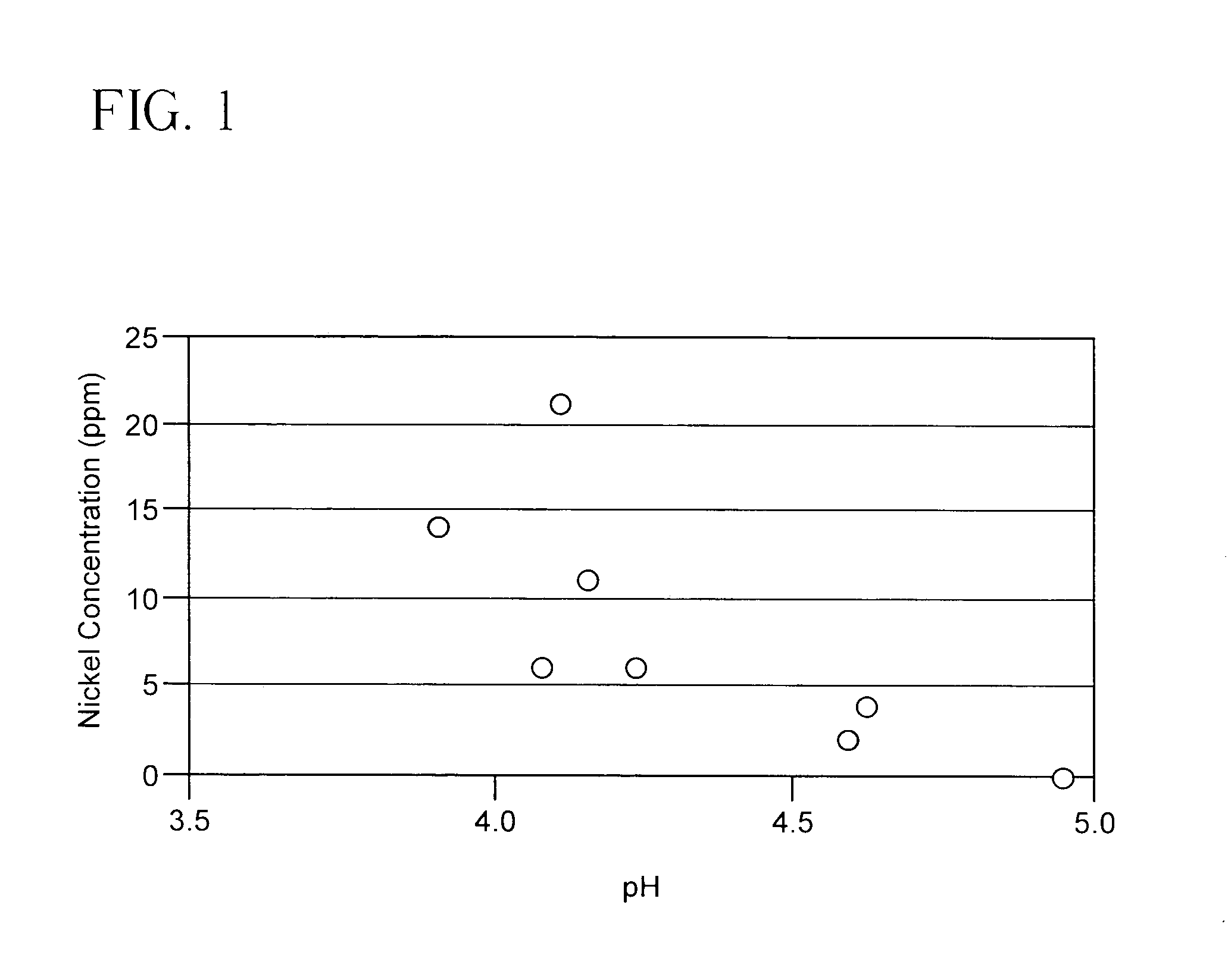Production of butanediol
a technology of butanediol and butanediol, which is applied in the preparation of oxygen-containing compounds, organic chemistry, chemistry apparatus and processes, etc., can solve the problems of each of the hydrogenation steps, and achieve the effect of avoiding the formation of hydrogen bonds
- Summary
- Abstract
- Description
- Claims
- Application Information
AI Technical Summary
Benefits of technology
Problems solved by technology
Method used
Image
Examples
example 2
[0023]In this example which is according to the invention, similar to Comparative Example 1, a molybdenum promoted nickel catalyst was used in a fixed bed system and was fed typical hydroformylation product containing roughly 18% HBA and 3% HMPA by weight with small amounts of organic materials, the remainder being water. The feed temperature was 60° C. and a gradually increasing temperature over the reactor to 92° C. at the exit was maintained. Reaction pressure was 400–750 psi operating pressures. Using an end-of-run criterion of maintaining over 99.9% HBA conversion the reaction system successfully processed over 3.5 liters of feed per gram of catalyst in a test that spanned over 220 days.
[0024]A comparison of the results achieved in Example 2, i.e. 220 days of operation, compared with the 75 day run time of Comparative Example 1 clearly illustrates the important advantages achieved by the temperature profile regulation according to the invention.
example 3
[0025]In this example various levels of a sodium acetate / acetic acid buffer solutions were added to the hydroformylation product feed having a pH of about 4 and containing roughly 18% HBA and 3% HMPA by weight as described in Example 2. Nickel concentration in the reactor effluent was measured as an indication of catalyst loss during a run similar to that of Example 2. FIG. 1 shows the effect of controlling pH of the feed on nickel dissolution and loss. At a feed pH of 4, the nickel concentration in the effluent was 14–21 ppm. Above a feed pH of 4.5, nickel concentrations in the effluent was below 5 ppm.
[0026]A buffer stock solution was made comprised of 130 g sodium acetate trihydrate and 10 g glacial acetic acid together with water to form 1 liter of solution. Buffer was added in amount sufficient to achieve the indicated pH.
[0027]These results show the dramatic decrease in loss of active catalyst which results from the pH regulation in accordance with the invention.
[0028]The hydr...
PUM
| Property | Measurement | Unit |
|---|---|---|
| temperature | aaaaa | aaaaa |
| temperature | aaaaa | aaaaa |
| temperature | aaaaa | aaaaa |
Abstract
Description
Claims
Application Information
 Login to View More
Login to View More - R&D
- Intellectual Property
- Life Sciences
- Materials
- Tech Scout
- Unparalleled Data Quality
- Higher Quality Content
- 60% Fewer Hallucinations
Browse by: Latest US Patents, China's latest patents, Technical Efficacy Thesaurus, Application Domain, Technology Topic, Popular Technical Reports.
© 2025 PatSnap. All rights reserved.Legal|Privacy policy|Modern Slavery Act Transparency Statement|Sitemap|About US| Contact US: help@patsnap.com

